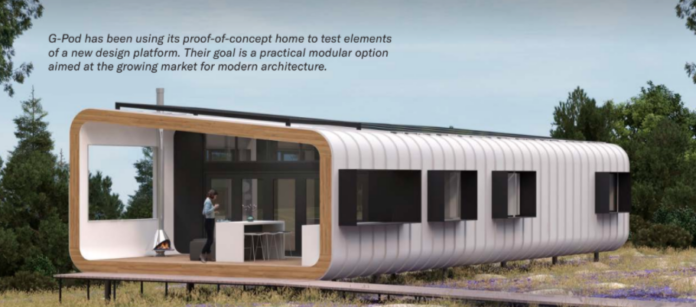Mark Wille interviews Andrew Seelye of G-Pod Americas on the company’s new cutting-edge modular platform
- Design engineering company G-Pod is developing a plug-and-play platform for modular manufacturers
- They are focused on meeting the growing demand for modern architecture both in the U.S. and abroad
- Their platform can adapt to a variety of markets, supply chains and climate zones
Seelye, President and Managing Partner of G-Pod Americas.
Although G-Pod is in the modular space, they’re not a manufacturer. Rather, they’re an architectural engineering company that is developing Seelye calls “a platform.”
The platform will adapt to a variety of geographical markets, a range of building material choices (steel, wood and even mass timber framing) and local supply chains.
“Our platform will allow people to build anything from an accessory dwelling unit to a large home or apartment tower,” says Seelye. “Early versions will be systematized around 12 x 24 modules.” The target market is builders, developers and housing manufacturers, preferably those with existing manufacturing capacity.
G-Pod’s platform isn’t for traditional modular homes—Seelye believes that a lot of young buyers prefer eco-friendly, modern designs. He wants to give those young buyers a modular option.
Although modern architecture has long been popular in other countries, and has been gaining traction in the U.S., it’s not what a lot of people envision when they think of modular. “Most existing products offer retro-views of style,” says Seelye. “We’re looking to the future.”
Another of G-Pod’s goals is for all homes based on its platform to meet Passive House standards for thermal and air tightness performance. That includes the ability to satisfy all energy needs with solar panels. Passive House has never been cost-effective for most homes in most climates, but Seelye believes an intelligent modular system can make it so.
The company has been developing its platform at an off-grid rural site just a few miles north of San Antonio, Texas. Their “living lab” is an 1100 square foot villa where they experiment with various approaches. “We’re trying different materials,” says Seelye, “so we can better understand how various combinations work together.”
They’re also looking at ways to help the platform adapt to a variety of domestic and international markets, from the U.S. to Costa Rica or Argentina. “Our ultimate goal is a modular system, but we would like to give people the ability to use panels or even smaller components. We want to be able to work with folks where they are,” he says.
G-Pod is in discussions with a couple of U.S. manufacturers and Seelye is optimistic that one of them will go to market sometime in 2022. “If we collaborate with companies that have similar visions, we believe we can make a difference for the industry,” he says.
Offsite Builder will take a more in-depth look at G-Pod’s living lab in a future issue. Meanwhile, the video is a good overview of the company’s philosophy and what they hope to achieve.


















Great looking build. Love the ideas here.